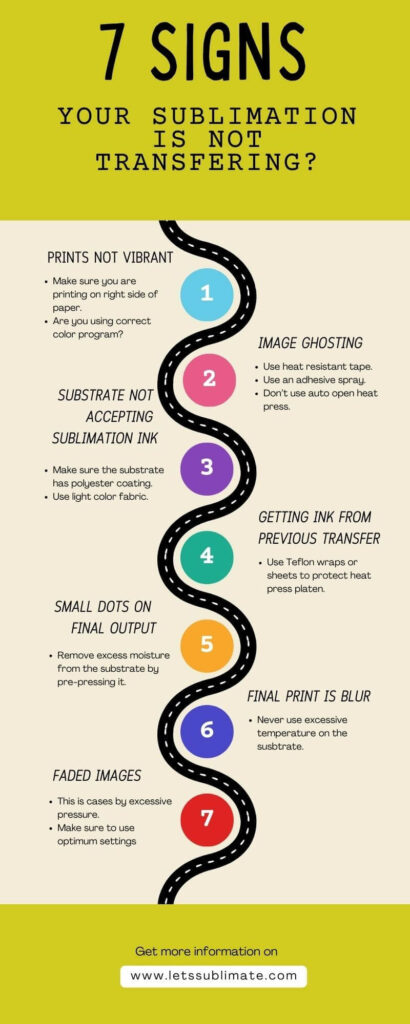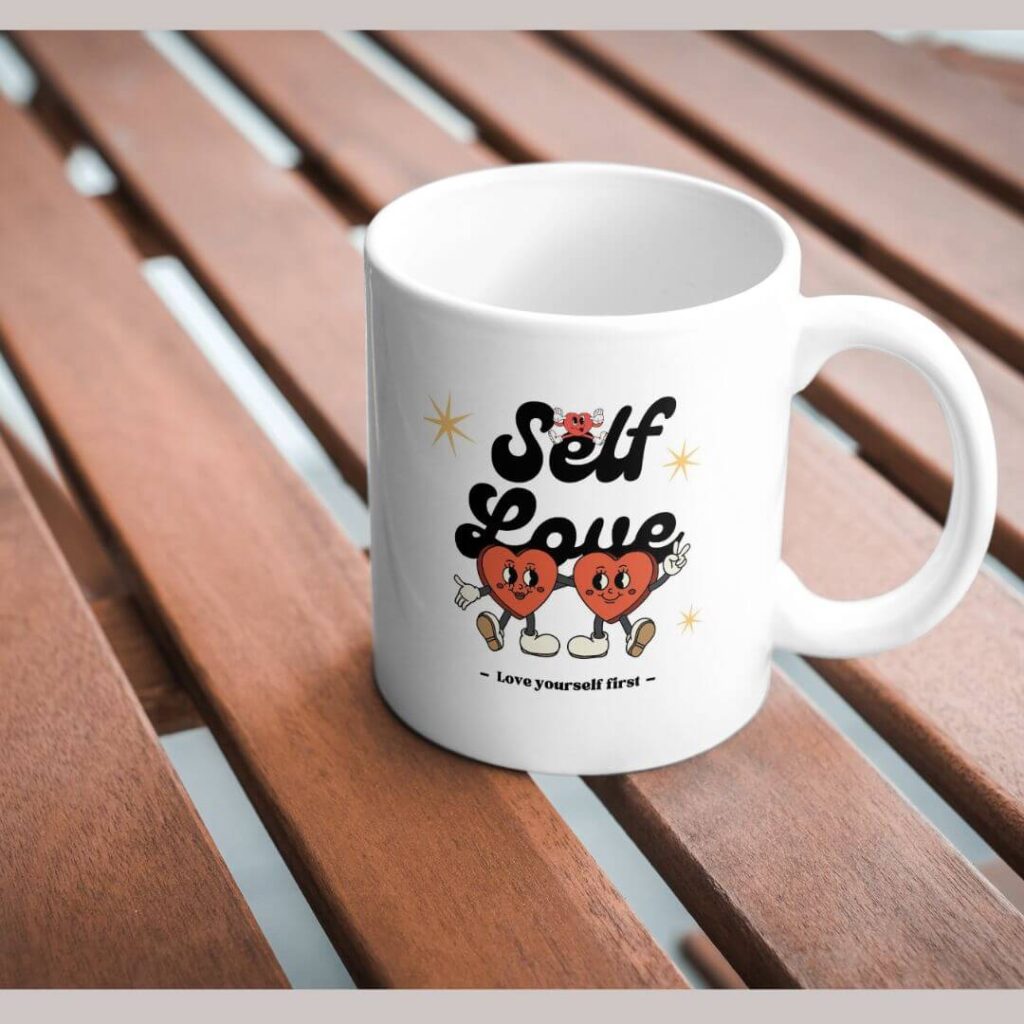Sublimation is not an easy process. You need to master this art to get desires outcome. In the journey you will surely face some issues, but the most common issue will be ‘why is my sublimation not transferring properly’?
I mastered this art with the help of my father and grandfather who run a successful printing press. Whenever I get stuck I use to seek their advice to figure out the best way.
If you have just started your journey and are getting frustrated because of improper outcome, don’t worry. This is just a learning process, and I am here to help you.
To make your journey easy, here I have addresses 7 common reasons of why your sublimation is not transferring properly and how you can fix it. Check it out.

Reason 1 – Why aren’t my prints coming out vibrant?
There are few common reasons of why the prints are could be coming less vibrant.
- Make sure you are printing on the right side of the paper, which is usually the bright white and other side is mostly off-white.
- Also make sure that you are printing via the correct color correction program.
- If you are printing on canvas and the prints are looking dull, use a spray coat as this will help prints to look vibrant after pressing.
Reason 2 – Why is printed image ghosting?
Ghosting is when you see a second version of you image on the side of original image. It occur when the transfer paper shift slightly during the process (mainly when you open and close the heat machine). Here is how to fix it.
- Always tape the hard substrate to the transfer paper. Make sure to use heat resistant tape.
- If you are working with t-shirts or any fabric, then always use adhesive spray to prevent any movement.
- Remove transfer paper immediately after heat pressing.
- For getting best results never use an auto open heat press as they pop open too fast, resulting in shift of transfer paper.
Reason 3 – Substrate not accepting sublimation ink
It is worth noting that not every product accepts printing ink. For dye – sub to work, the substrate should have polyester coating, or it should be made of polyester material. I recommend using 100% white polyester for perfect transfer.
However, it is not possible to print on 100% cotton as the transfer will wash out in first wash. You can easily sublimate on cotton/poly blends, but the transfer will appear less colorful and will give a vintage look. In conclusion, ‘Higher level of polyester will result in best outcome’.
Reason 4 – Why are you getting ink from previously transferred image to a new substrate?
During heat transfer, printing ink bleeds on the top or bottom of the heat press platens. Due to which it is very important to protect the press with right material. For preventing ink to get on the heat press platen, always use Teflon wrap or Teflon sheets. They are reusable, just wipe of the excess ink after using it. You can also use the silicon treated sheets which you can discard after every use.
Reason 5 – Why there are small dots in final output?
If there is excess moisture then there are chances that some dots will appear on your final print. So, to avoid it, always pre-press your substrate so that all moisture can be eliminated. Then allow the material to cool down and then print the design.
Reason 6 – What is the final outcome blurry?
If you are getting blurred prints after pulling off the transfer paper then this may be due to applying excessive time and temperature in the heat machine. Make sure to use optimum time and temperature according to the substrate you are using.
Reason 7 – Why are images coming out faded?
Image fading is usually caused by excessive pressure, time and temperature. Always use recommended settings defined for every substrate by the manufacturer.
Common issues to prevent while sublimating mugs
Issues arise while sublimating mugs are very common and almost every artist faces it. Common issues include blurry, faded and undesired prints. So, to tackle these issues you can follow below checklist.
- Most of the time block mugs look brown after sublimation process. It means you are over pressing it in heat machine. Due to which, the ink is gassing out and it is spreading over the area more that it should, and the black colored mug looks brownish.
- Another most common issue is the appearance of yellow shading in the mug. It means that you are using the inkjet ink instead of right sublimation ink. Make sure to use high quality printing ink to get vibrant outcome.
- If your mug looks greenish in color then it is the result of under – pressing. Always use right pressure to get the desired outcome.
- If the print quality is poor then check if the quality of original image is poor or not. Also check if you are using recommended setting of 300 DPI for your image.
- Apart from all these issues, always use right temperature, time and pressure for getting the colourful outcome. You can follow manufacturer’s guidelines for the same. I always do a sample test with some hit and trial to reach optimum time, temperature and pressure settings.
What is the optimum time and temperature settings?
According to my years of experience here is the list of optimum time and temperature settings for multiple substrates. As a beginner you can use this table for your reference. However, I suggest you to do a sample test and adjust settings a bit to achieve desired outcome.
| Substrate | Time (°F) | Temperature (Seconds) |
| Canvas garments | 365 | 40 |
| Key chains | 330 | 15 |
| Caps | 360 | 30 |
| Mouse pads | 380 – 400 | 45 |
| Polyester fabric (100%) | 400 | 45 |
| Ceramic mugs | 350 – 400 | 150 – 200 |
Conclusion
With the help of above guide, you can easily eliminate common issues of why is my sublimation not transferring. Also, sublimating a mug is challenging, but if you will follow above pointers then you will surely get the desired outcome. If you have any other question or issue you can comment below or you can reach out to me via email.
Frequently Asked Questions
Q – Can you heat press the transfer more than once for a proper transfer?
No, you should never heat press the transfer more than once as the transfer paper is made to heat press only once. During initial pressing your design has already made the bond with the fabric. If your will press it again then the heat will damage the already printed design.
Q – Is sublimation printing difficult process?
No, sublimation is not difficult, but it is tricky. You will need practice and time to master the process, but once mastered you will be able to print on any substrate (compatible with dye- sub printing) easily.







Very rapidly this website will be famous among all blogging viewers, due to it’s fastidious content
I am regular visitor, how are you everybody? This post posted at this site is really good.
A person essentially lend a hand to make severely articles I’d state.
This is the first time I frequented your website page and thus far?
I surprised with the analysis you made to create this actual put up amazing.
Fantastic job!
Greate article. Keep writing such kind of info on your
page. Im really impressed by your site.
Hi there, You have performed an incredible job. I will certainly digg
it and in my opinion recommend to my friends. I am sure they will be benefited from this website.
Great post.